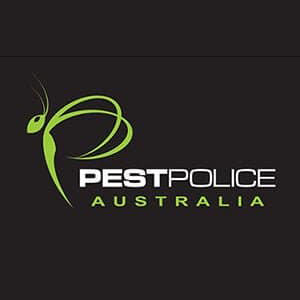The number of insects in Australia alone is in the millions; and while some of them might be useful to your environment, others can be rather damaging. Gardeners, on the other hand, can keep these harmful insects at bay and manage them with the use of easy, organic pest control techniques.
While there is no lack of insects that are harmful to your garden, we’ve narrowed them down to 8 common garden pests. We’ll identify each and provide quick recommendations on how to detect and get rid of them using non-toxic techniques.
Australia is one of the world’s largest nations by land area and population. Being a large expanse of area with a large number of inhabitants, it hides a few surprises. One is that it is a haven for a diverse range of fauna and flora. You’d be forgiven to think of the country as a large pot of nature all gathered together. With such a diversity, a variety of species will naturally make your house their home as well.
From time to time, you should inspect your plants and your yard for signs of disease or pest infestation. Maintaining your gardens is also important if you don’t want to wake up one day to discover that a colony of strange-looking crawlies has taken up residence in your yard.
8 Common Garden Pests in Australia and How to Get Rid of Them
1. Aphids
There are around 250 aphid species out of over 4000 that are detrimental to plants. Aphids come in a variety of colours, ranging from white, yellow, brown, black, and pink. Aphids are tiny and may often be mistaken for plant greenery; however, there are clear signs of an aphid infestation if there is one in the garden.
Look for twisted, yellowed, or browned leaves, as well as drooping or stunted growth. Aphids are capable of depositing a sticky material on the surface of plants known as “honeydew.” If you see any of these, take a closer look since aphids are most likely present.
If you find aphids in the early stages, they might be rather straightforward to get rid of. Some methods for getting rid of them are as follows:
- Aphids are removed by hand from tiny groups of aphids
- To get rid of them on plants, spray them with cold water. It is important to wash the undersides of the leaves as well.
- Lady beetles are a great addition to any garden. Aphids are food for lady beetles.
- It may be necessary to use a garlic spray or insecticidal soap when dealing with heavy infestations.
2. Cabbage Moth
Cauliflower moths may be a huge nuisance if you have a vegetable garden. The caterpillars, not the moth, are typically the issue. Caterpillars feast on leaves and, if left to their own devices, may destroy an entire vegetable crop.
You may not be able to see the caterpillars themselves, but if you want to be certain, look for holes in leaves, dark green droppings on leaves, and discolouration on any cauliflower and broccoli.
If you see any of these signals, take a closer look to see if you can spot the caterpillars. Some methods for getting rid of them are as follows:
- Hand removal.
- Attract insect-eating birds to your yard by providing them with a food source.
- Plant dill, fennel, coriander, and basil in your vegetable garden as their fragrance will scare away the insects.
- Bacillus thuringiensis is a naturally occurring pesticide that is effective against cabbage moths. Chemical sprays should not be used in a vegetable garden since consumers can be exposed to the chemicals this way.
3. The European Earwig
The European earwig is an omnivorous bug that will consume any organic substance that it comes into contact with. In certain situations, they may be useful to the garden since they prey on other pests that might otherwise harm it. When they begin to proliferate out of control, they will begin to prey on fruit, flowers, and other ornamental plants in the garden.
Their presence can be detected through jagged holes in the leaves or shredded leaf tips. Damage to fruit trees that looks like it was caused by birds may be found when they are around, too. Some of the methods for getting rid of European earwigs are as follows:
- Placing dampened newspaper in a pot and turning it upside down is a good way to start. Earwigs will make their way inside the pot this way.
- Earwigs are drawn to beer, but they perish as a result of ingesting it. Pour beer into tiny pots and set the pots near locations where earwigs may be found to attract them.
- Earwigs will be attracted to orange rinds. Earwigs should be removed first thing in the morning after they have been spread about. Remove them from the rinds and place them in a bucket of soapy water.
4. Mealybugs
Mealybugs are roughly 4mm in length and are coated in a white waxy covering that gives them their name. They are a common garden pest that infects a variety of plants, including fruit trees, decorative plants, ferns, and orchids, among others.
They like to congregate and may be seen in large groups but detecting them early can keep them from causing massive damage to your plants.
Mealybugs exude a “honeydew,” which causes leaf curling and yellowing, wilted plants, and sticky foliage. Mealybugs generate these by sucking the nectar from plants. To get rid of them organically, do the following:
- Using a powerful spray of water, blast them off the plants.
- Make your garden a haven for ladybirds by planting fennel seeds, coreopsis, dill, and other colourful flowers in the garden.
- If the infestation is quite minor, prune the plants.
- Mealybugs should be treated with rubbing alcohol or methylated spirits. They will kill the mealybugs but they will not affect the plants.
- Mealybugs may be exterminated by adding garlic or chilli to the water. Allow the garlic or chilli to stay in the water for a few minutes, or use boiling water and allow it to cool.
5. Scale Insects
Scale insects attack a variety of plants, including trees, decorative plants, indoor plants, and ferns. They have a waxy surface that may be either black, soft brown, or red, depending on the kind. They feed on plant sap and may cause plant growth to be stunted, defoliation to occur, and even death to a plant if not controlled.
Look for lumps on plants that mimic shells to determine whether they are from these creatures. You may observe twisted fruit developing on fruit trees or notice that their twigs or branches are withering.
Some methods of controlling them are as follows:
- If the infestation is modest, wipe them away with a moist cloth. If the infestation is severe, spray afflicted areas with horticultural soap.
- Ladybirds eat scale insects, so lure these into your garden.
- Keep ants away from scale insects because the former are natural deterrents to their natural predators.
6. Snails and Slugs
Pests like snails and slugs may cause a lot of harm to a landscape. You can usually see them since they are bigger creatures, but you must look very carefully or you may miss some entirely.
The shade and wet environment are prefered by snails; therefore search for them in shaded and damp regions. When you look around the garden, you’ll find enormous holes in the leaves as well as sparkling silver streaks. If the infestation becomes widespread, your vegetable and herb garden may be entirely ruined.
Snails and slugs may be eliminated in a variety of methods, including:
- Pick them up by hand and drop them into soapy water.
- Remove any possible breeding places from the garden, such as wet and dark sections of the lawn.
- On the damaged plants, apply a coffee mix (one part coffee to five parts water) using a spray bottle. They will die as a result of the caffeine in the coffee.
- Beer has a strong attraction to snails and slugs. They will enter the jar if you put beer in it, resulting in death.
- Several different types of materials, including crushed eggshells, wood ash, sawdust, lime, and wood shavings, may be used to dissuade snails or slugs. When placed in the soil, they will aid in keeping snails and slugs away from the garden.
7. Spider Mites
The red spider mite is the most common form of spider mite found in the environment. In warm weather, spider mites grow rapidly and may cause extensive damage to a landscape. Yellow stains on the tips of leaves, peeling along leaf veins, and silky weaving are all signs of their presence, though you may not see them at first. In severe infestations, you may see defoliation as a consequence.
Following these procedures can help you get rid of spider mites:
- Ladybirds should be included in your garden’s ecosystem.
- Make sure to keep the plants well-watered. Spider mites favour a dry, hot environment.
- Remove the insects off the plants and into the water by launching a powerful stream of water at them. It is possible that you may have to repeat this step many times.
- Spray the plants with horticultural soap or insecticidal detergent to remove any remaining pests. Make certain to treat the undersides of the leaves as well.
8. Whiteflies
Whiteflies are little flying insects that are linked to aphids and mealybugs. They have the appearance of little moths and may be found hiding on the undersides of leaves. The silver leaf whitefly and the glasshouse whitefly are the two most common whiteflies in Australia, with the silver leaf whitefly being the most widespread.
When whiteflies suck the juice from plants, stunted growth, wilting, and a decreased production will occur, especially on commercial farms. You may get rid of whiteflies by doing the following:
- If the infestation is small, removing the afflicted leaves may be sufficient.
- Hosing the plants for several consecutive days can help.
- Natural whitefly predators like lacewings, ladybirds, and hoverflies are attracted to the garden by the presence of marigolds and alyssum. Plant these blooms.
- Whitefly repellents such as chilli and garlic are effective.
- Try potassium soap sprays and neem oil as they are effective, too.
Conclusion
Little insects and creatures may be found in almost every kind of garden environment. These critters have a natural tendency to seek out natural environments and to carry out their natural process of establishing homes wherever they discover acceptable conditions.
Sadly, their presence can become a nuisance to your gorgeous lot. If you need assistance in putting in place precautions to keep these critters from invading your garden, we are here to assist you.
To ensure your garden stays safe and free from pests that can potentially render all your gardening efforts futile, call our pest control experts here at Pest Police! With our concerted efforts, you can guarantee growing your plants, trees, and flowers without disruption.

